The past year hasn’t quite been apocalyptic, but at times it has felt like it. Beth Phillips looks at how the UK’s Top 50 independent retailers have fared – and finds variety discounters and small supermarkets leading the way
Arctic weather conditions brought more misery last month, but they were great news for many of Britain's independent grocery retailers. As roads became impassable and pavements were transformed into skating rinks, shoppers turned to their local stores for groceries, boosting sales by as much as 80% in some cases.
But after the thaw, there is little evidence to suggest consumers stuck to their local store. And in these apocalyptic times, with the mighty multiples fighting a vicious (albeit supplier-led) price war against the backdrop of a deep recession, the question is: just how resilient is the independent sector?
On the surface, The Grocer's annual ranking of the Top 50 independent grocery retailers suggests the news is positive. Aided by food price inflation, and the collapse of Woolworths, indies increased sales by an impressive 9%, following an 8% increase in 2008. And with pre-tax profits jumping 15%, margins inched up from 2.7% to 2.8% (although this figure is based only on companies for whom profit figures were available).
The headline figures reaffirm the point, often made, that food and drink has been a good shelter from the storm, and GT News, G101 Off Sales, Eismann UK and Stokes all returned to profit in the past year. But the underlying picture is far less resilient. Profits were down for almost half the list; and four Oddbins, Cook, Jempson's and Ben's reported a loss, although Oddbins, Cook and Ben's all reduced their losses. But it was chiefly thanks to the inclusion of variety discounters including, for the first time this year, Wilkinson that the independent sector put in such a strong performance. Strip out Wilkinson, TJ Morris and B&M Retail, and the profit margins are a wafer-thin 1.9%.
It's a moot point, of course, as to whether variety retailers should be considered rivals in such a list, but the reasons for including them are more compelling than the reasons for ignoring them. Wilkinson, which enters the list for the first time this year, boasts a turnover of £1.4bn, taking it straight to the number one spot, but its rapidly expanding groceries range and an offer that stretches from health & beauty right through to household and petcare, more than merit its consideration in this year's rankings.
And despite its size, and its position as a variety retailer, Wilkinson was by no means immune to the economic climate. Its profits slumped 41% to £29.5m. The company blamed a "much harsher trading environment" as well as investment in its rebranding programme.
The company will be glancing nervously over its shoulder at rival discounters. TJ Morris, which operates Home Bargains, posted the highest pre-tax profits on this year's list, at £42.6m. And B&M Retail, which trades as B&M Bargains, stormed into the top five after increasing sales by 66% and profits 118% during the year. Its success means four of the top five indies are discounters.
The only true casualty from last year's Top 50, in fact, was Wine Cellar, which entered administration in September, with 109 of its 170 stores snapped up by wholesaler European Food Brokers' retail arm EFB Retail. According to the latest figures available from Companies House, EFB Retail had a turnover of £4.6m in the year to 31 January and with its Wine Cellar acquisition it will surely enter the Top 50 next year.
EFB won't be the only new entrant. As businesses folded and larger operators sold off stores, a number of new chains took the opportunity to set up shop in 2009. Supermarket chain Haldanes, for example, bagged 26 former Somerfield stores from The Co-operative Group and hopes to bring this to a total of 50 within the next few years, while Alworths, a spin-off from the collapse of Woolworths, already has six stores. Asco Stores opened in Warrington last year and plans further expansion, although its growth so far has been hampered by a number of teething troubles.
In common with these newcomers, several stalwarts of the Top 50 took advantage of the large number of retail sites on the market to boost store portfolios. Overall store numbers rose 2%, with 21 companies increasing their estates. B&M Retail (67%), Cook (33%), CK's Supermarkets (24%) and 99p Stores (23%) led the charge.
As well as increased availability of attractive sites, prices have come down. According to property agents Christie & Co, retail property values dropped by 9.8% in 2009, compared with a decline of 6.5% in 2008. Recent research from the Local Data Company also revealed that one in eight shops stands empty in the UK, with some towns boasting shop vacancy rates of 25%.
"The drop in values and the lack of competition from the majority of the national chains, which have concentrated on operational efficiencies and keeping balance sheets in check in the face of the recession, has allowed regional and local operators to continue to build their estates," explains Christie & Co head of retail Tony Evans. "Independent buyers with a good deal of equity were able to secure the funding they needed to do deals in 2009."
The most opportunistic strike was enacted by 99p Stores. The discounter only planned to open 25 stores in 2009, but by the end of the year had opened 61. Its growth can be traced back to Christmas 2008 when the collapse of big retailers such as Woolworths, Zavvi and Blacks creating the perfect conditions for growth, says 99p Stores director Hussein Lalani. "Suddenly a huge amount of property was available," he explains. "No other companies were going after it and landlords were very twitchy because of the empty rates tax and the economic climate. Where before landlords may have been really picky, they were ready to do deals."
The landgrab was seen right across the independent retailer sector. Supermarket and c-store chains Mills Group, Harry Tuffins and CK's Supermarkets all took advantage of The Co-op Group's forced sell-off of Somerfield stores to expand and, in the case of Mills Group, into a completely new area for the business: supermarkets. MD Nigel Mills estimates that the five stores will increase Mills Group's retail turnover from £58m to £90m.
Other indies are still circling, ready to swoop on a bargain. Forecourt operator Snax 24 says it is keen to take advantage of companies closing or selling stores.
"A lot of smaller networks are getting rid of their loss-making operations and there is a move within the large oil companies to divest sites they consider not to have any long-term viability and, more importantly, to be in need of substantial investment," says Snax MD Bill Ahearn.
"While most of the large groups say they are looking to acquire new sites, it is only those sites that have potential and are worthy of the investment that will be of interest and that has always been the case."
Jonathan James, MD of Spar and Budgens supermarket and forecourt operator James Graven & Sons, has a similar outlook to Ahearn. "We are constantly on the look-out for acquisitions and our business model allows us to quickly react to our customers' needs," he says. "There are some good opportunities out there at the moment, we just need to react to them. We begin to build a brand new greenfield convenience forecourt this month with a unique Spar concept store. We will also refit two other stores in the first quarter with a focus on all that is local. I also hope to acquire another store during the latter part of 2010."
Ambitious expansion plans are nevertheless being limited by unrealistic rental prices demanded by some landlords. Retailers say that, despite the recession, some landlords are still trying to charge 2008 prices for sites. "There are lots of vacant stores available where the rental aspirations are still too high, typically because the owners bought at the top of the market and cannot afford to crystallise a loss," says B&M Retail director Simon Arora.
"We refuse to pay excessive rents, even where incentives such as capital contributions or extended rent-free periods are offered to us. To build a business for the long term, we have to focus on the lowest possible rent over the whole of the lease term, rather than being seduced by short-term incentives," he adds.
Ahearn agrees. "Some sanity is returning to valuations, as clearly prices were too hot preceding the recession and right now, with the squeeze on cash leveraging, any acquisition is difficult."
These problems don't seem to be putting indies off. Of the 36 companies responding to our Top 50 survey, 23 said they planned to make acquisitions this year, including Stans Superstore, the last remaining one-store indie on our list. The will to survive is clearly very strong although few will complain if there's fresh snow to come.
Convenience Stores
Indie convenience stores were under the cosh during 2009 as the multiples encroached further on their territory and the slowdown affected consumer spending. Despite the pressure, profit margins among the 12 operators on our list jumped from 1.2% to 2.1%, with profits up 80%. However, the majority of this growth came from the spectacular turnaround of Martin McColl and its 252% increase in profits. "Like-for-like growth has been difficult, as consumers tightened their belts and searched out value," admits Henderson Retail finance director Ron Whitten. But Mills Group MD Nigel Mills believes 2009 presented opportunities as well as threats. His company, which started life as a CTN, has already morphed into a convenience operation and is well on its way to becoming a supermarket operator. "The growing population needs feeding and Mills is moving into food retail in a big way," he says.
Discounters
The discounters dominate the Top 50, accounting for four of the top five places. And of the seven discounters in our overall list, five saw double-digit increases in turnover last year, led by B&M Retail, which along with 99p Stores also clocked up triple-digit pre-tax profit increases. But discounters didn't have it all their own way. Average profit margins fell from 4.3% in 2008 to 3.9% in 2009 and profits fell at Wilkinson, Heron Frozen Foods and Frozen Value (which trades under the Fultons Foods and Jack Fultons fascias). Not that this has derailed expansion plans. This year TJ Morris has enlarged its Liverpool DC and B&M Retail and 99p Stores are planning to move to bigger DCs, creating capacity for more stores. "It means we can make immediate and sizeable purchases, allowing suppliers to dispose of excess stock in a quick and controlled manner," says B&M director Simon Arora.
Supermarkets
There are 13 independent supermarkets in the Top 50 this year, and the sector appears to be enjoying a renaissance. "Our biggest opportunity is to embed ourselves firmly in the communities within which we operate," explains James Graven & Sons MD Jonathan James. Welsh retailer CK's has adopted the same tactic. "We are aiming to provide the local community with a complete shopping experience so the local people can reduce their travelling with the ever-increasing price of fuel," says MD Christopher Kiley. With renewed interest in the format, there are several new entrants, including Haldanes, Asco and Alworths, as well as Mills Group's migration to the format. Warners Retail, meanwhile, is following in the footsteps of Jempson's by launching a loyalty card this year. Sales rose an average 5% last year across the supermarkets in the Top 50, with profits up an impressive 25%.
Forecourts
With fuel prices at eye-wateringly high levels, it's no surprise independent forecourt operators had to take a hit on their margins last year to pull in shoppers. The four indies on our list saw margins nudge down from 1.7% to 1.6%, with profits falling 6%. Euro Garages, ninth on our list, was the sector's standout performer, increasing sales by 5% and profits 36% as it aggressively opened stores and agreed a tie-up with Greggs in the baker's first move into forecourts. "For well-run businesses with robust financing, the recession creates opportunities to grow both organically and from acquisitions," says Euro Garages FD Martin Ashcroft.
Off-Licences
The off-licence sector was in turmoil last year as two of the biggest players fell into administration. The collapse of Wine Cellar and Threshers owner First Quench Retailing called the sector's ability to compete against the multiples' promotions into question. The seven offies in the Top 50 had mixed fortunes, with R&M Swaine posting double-digit sales increases and a triple-digit profit rise. The biggest operator, Oddbins, remained loss-making, but with a £4m improvement on 2008's £10.4m loss. "There is still a bright future for regional off-licences that can keep their costs down by delivering locally, not nationally," says R&M Swaine MD Martin Swaine.
CTNs
The number of pure CTN operators left on the Top 50 is rapidly dwindling as retailers diversify their offer and branch out into convenience. Martin McColl and Mills Group, which both started as CTN operators, are now classed as convenience stores and the three CTN operators are also moving away from their traditional offer to some degree. GT News now has 19 convenience stores under the Spar fascia and Maynews is introducing alcohol into more of its stores. Rippleglen has also been trialling a convenience offer. All three reported a drop in sales last year, down an average of 3%, while store numbers and staff numbers also fell.
Others
From a fine wine merchant to a greengrocer, the other players in the Top 50 represent a variety of retailers with a variety of results. Greengrocer Stokes may have returned to profit, but its sales plummeted 23% following a store disposal programme and 2009 results are more than three months overdue for filing at Companies House. Frozen food retailer Eismann UK also returned to profit, boosting sales 40% in its latest results, albeit for an 18-month period. Fellow frozen food retailer Cook remained loss-making, but chairman James Perry insists it returned to profit in October and will report EBITDA of £1.3m in its next financial year.
Arctic weather conditions brought more misery last month, but they were great news for many of Britain's independent grocery retailers. As roads became impassable and pavements were transformed into skating rinks, shoppers turned to their local stores for groceries, boosting sales by as much as 80% in some cases.
But after the thaw, there is little evidence to suggest consumers stuck to their local store. And in these apocalyptic times, with the mighty multiples fighting a vicious (albeit supplier-led) price war against the backdrop of a deep recession, the question is: just how resilient is the independent sector?
On the surface, The Grocer's annual ranking of the Top 50 independent grocery retailers suggests the news is positive. Aided by food price inflation, and the collapse of Woolworths, indies increased sales by an impressive 9%, following an 8% increase in 2008. And with pre-tax profits jumping 15%, margins inched up from 2.7% to 2.8% (although this figure is based only on companies for whom profit figures were available).
The headline figures reaffirm the point, often made, that food and drink has been a good shelter from the storm, and GT News, G101 Off Sales, Eismann UK and Stokes all returned to profit in the past year. But the underlying picture is far less resilient. Profits were down for almost half the list; and four Oddbins, Cook, Jempson's and Ben's reported a loss, although Oddbins, Cook and Ben's all reduced their losses. But it was chiefly thanks to the inclusion of variety discounters including, for the first time this year, Wilkinson that the independent sector put in such a strong performance. Strip out Wilkinson, TJ Morris and B&M Retail, and the profit margins are a wafer-thin 1.9%.
It's a moot point, of course, as to whether variety retailers should be considered rivals in such a list, but the reasons for including them are more compelling than the reasons for ignoring them. Wilkinson, which enters the list for the first time this year, boasts a turnover of £1.4bn, taking it straight to the number one spot, but its rapidly expanding groceries range and an offer that stretches from health & beauty right through to household and petcare, more than merit its consideration in this year's rankings.
And despite its size, and its position as a variety retailer, Wilkinson was by no means immune to the economic climate. Its profits slumped 41% to £29.5m. The company blamed a "much harsher trading environment" as well as investment in its rebranding programme.
The company will be glancing nervously over its shoulder at rival discounters. TJ Morris, which operates Home Bargains, posted the highest pre-tax profits on this year's list, at £42.6m. And B&M Retail, which trades as B&M Bargains, stormed into the top five after increasing sales by 66% and profits 118% during the year. Its success means four of the top five indies are discounters.
Land grab
Booths: two new stores in 2009, two planned later this year
B&M Retail: 45 Woolworths in 2009, plans to continue apace
CK's Supermarkets: three stores from The Co-op Group in 2009
Cook: opened eight franchise stores. More planned this year
David Sands: two stores last year, a further two this year
Heron Frozen Foods: snapped up 18 former Woolworths
Harry Tuffins: acquired two stores from The Co-op Group
James Graven & Sons: two stores planned for this year
J&J Wilson: 13 stores in 2010
Maynews: two to three new stores planned this year
Mills Group: acquired five stores from The Co-op Group last year
99p Stores: acquired 61 stores last year and plans 80 this year
R&M Swaine: bought 34 Threshers stores last year
Stans Superstore: one new store planned this year
TJ Morris: acquired 18 former Woolworths in 2009. Plans to enter Northern Ireland this year
Wilkinson: bought 10 former Woolworths in 2009 and more "in the pipeline"
There are a number of other new entries or re-entries in this year's Top 50, including fine wine merchant Berry Bros & Rudd, Budgens retailer Kavanagh Group UK, frozen food retailer Eismann UK and Sussex-based supermarket and café chain Jempson's. This meant Newsplus Group and Proudfoot Group dropped off the bottom of the list. Booths: two new stores in 2009, two planned later this year
B&M Retail: 45 Woolworths in 2009, plans to continue apace
CK's Supermarkets: three stores from The Co-op Group in 2009
Cook: opened eight franchise stores. More planned this year
David Sands: two stores last year, a further two this year
Heron Frozen Foods: snapped up 18 former Woolworths
Harry Tuffins: acquired two stores from The Co-op Group
James Graven & Sons: two stores planned for this year
J&J Wilson: 13 stores in 2010
Maynews: two to three new stores planned this year
Mills Group: acquired five stores from The Co-op Group last year
99p Stores: acquired 61 stores last year and plans 80 this year
R&M Swaine: bought 34 Threshers stores last year
Stans Superstore: one new store planned this year
TJ Morris: acquired 18 former Woolworths in 2009. Plans to enter Northern Ireland this year
Wilkinson: bought 10 former Woolworths in 2009 and more "in the pipeline"
The only true casualty from last year's Top 50, in fact, was Wine Cellar, which entered administration in September, with 109 of its 170 stores snapped up by wholesaler European Food Brokers' retail arm EFB Retail. According to the latest figures available from Companies House, EFB Retail had a turnover of £4.6m in the year to 31 January and with its Wine Cellar acquisition it will surely enter the Top 50 next year.
EFB won't be the only new entrant. As businesses folded and larger operators sold off stores, a number of new chains took the opportunity to set up shop in 2009. Supermarket chain Haldanes, for example, bagged 26 former Somerfield stores from The Co-operative Group and hopes to bring this to a total of 50 within the next few years, while Alworths, a spin-off from the collapse of Woolworths, already has six stores. Asco Stores opened in Warrington last year and plans further expansion, although its growth so far has been hampered by a number of teething troubles.
In common with these newcomers, several stalwarts of the Top 50 took advantage of the large number of retail sites on the market to boost store portfolios. Overall store numbers rose 2%, with 21 companies increasing their estates. B&M Retail (67%), Cook (33%), CK's Supermarkets (24%) and 99p Stores (23%) led the charge.
As well as increased availability of attractive sites, prices have come down. According to property agents Christie & Co, retail property values dropped by 9.8% in 2009, compared with a decline of 6.5% in 2008. Recent research from the Local Data Company also revealed that one in eight shops stands empty in the UK, with some towns boasting shop vacancy rates of 25%.
"The drop in values and the lack of competition from the majority of the national chains, which have concentrated on operational efficiencies and keeping balance sheets in check in the face of the recession, has allowed regional and local operators to continue to build their estates," explains Christie & Co head of retail Tony Evans. "Independent buyers with a good deal of equity were able to secure the funding they needed to do deals in 2009."
The most opportunistic strike was enacted by 99p Stores. The discounter only planned to open 25 stores in 2009, but by the end of the year had opened 61. Its growth can be traced back to Christmas 2008 when the collapse of big retailers such as Woolworths, Zavvi and Blacks creating the perfect conditions for growth, says 99p Stores director Hussein Lalani. "Suddenly a huge amount of property was available," he explains. "No other companies were going after it and landlords were very twitchy because of the empty rates tax and the economic climate. Where before landlords may have been really picky, they were ready to do deals."
The landgrab was seen right across the independent retailer sector. Supermarket and c-store chains Mills Group, Harry Tuffins and CK's Supermarkets all took advantage of The Co-op Group's forced sell-off of Somerfield stores to expand and, in the case of Mills Group, into a completely new area for the business: supermarkets. MD Nigel Mills estimates that the five stores will increase Mills Group's retail turnover from £58m to £90m.
Other indies are still circling, ready to swoop on a bargain. Forecourt operator Snax 24 says it is keen to take advantage of companies closing or selling stores.
"A lot of smaller networks are getting rid of their loss-making operations and there is a move within the large oil companies to divest sites they consider not to have any long-term viability and, more importantly, to be in need of substantial investment," says Snax MD Bill Ahearn.
"While most of the large groups say they are looking to acquire new sites, it is only those sites that have potential and are worthy of the investment that will be of interest and that has always been the case."
Jonathan James, MD of Spar and Budgens supermarket and forecourt operator James Graven & Sons, has a similar outlook to Ahearn. "We are constantly on the look-out for acquisitions and our business model allows us to quickly react to our customers' needs," he says. "There are some good opportunities out there at the moment, we just need to react to them. We begin to build a brand new greenfield convenience forecourt this month with a unique Spar concept store. We will also refit two other stores in the first quarter with a focus on all that is local. I also hope to acquire another store during the latter part of 2010."
Ambitious expansion plans are nevertheless being limited by unrealistic rental prices demanded by some landlords. Retailers say that, despite the recession, some landlords are still trying to charge 2008 prices for sites. "There are lots of vacant stores available where the rental aspirations are still too high, typically because the owners bought at the top of the market and cannot afford to crystallise a loss," says B&M Retail director Simon Arora.
"We refuse to pay excessive rents, even where incentives such as capital contributions or extended rent-free periods are offered to us. To build a business for the long term, we have to focus on the lowest possible rent over the whole of the lease term, rather than being seduced by short-term incentives," he adds.
Ahearn agrees. "Some sanity is returning to valuations, as clearly prices were too hot preceding the recession and right now, with the squeeze on cash leveraging, any acquisition is difficult."
These problems don't seem to be putting indies off. Of the 36 companies responding to our Top 50 survey, 23 said they planned to make acquisitions this year, including Stans Superstore, the last remaining one-store indie on our list. The will to survive is clearly very strong although few will complain if there's fresh snow to come.
Convenience Stores
Indie convenience stores were under the cosh during 2009 as the multiples encroached further on their territory and the slowdown affected consumer spending. Despite the pressure, profit margins among the 12 operators on our list jumped from 1.2% to 2.1%, with profits up 80%. However, the majority of this growth came from the spectacular turnaround of Martin McColl and its 252% increase in profits. "Like-for-like growth has been difficult, as consumers tightened their belts and searched out value," admits Henderson Retail finance director Ron Whitten. But Mills Group MD Nigel Mills believes 2009 presented opportunities as well as threats. His company, which started life as a CTN, has already morphed into a convenience operation and is well on its way to becoming a supermarket operator. "The growing population needs feeding and Mills is moving into food retail in a big way," he says.
Discounters
The discounters dominate the Top 50, accounting for four of the top five places. And of the seven discounters in our overall list, five saw double-digit increases in turnover last year, led by B&M Retail, which along with 99p Stores also clocked up triple-digit pre-tax profit increases. But discounters didn't have it all their own way. Average profit margins fell from 4.3% in 2008 to 3.9% in 2009 and profits fell at Wilkinson, Heron Frozen Foods and Frozen Value (which trades under the Fultons Foods and Jack Fultons fascias). Not that this has derailed expansion plans. This year TJ Morris has enlarged its Liverpool DC and B&M Retail and 99p Stores are planning to move to bigger DCs, creating capacity for more stores. "It means we can make immediate and sizeable purchases, allowing suppliers to dispose of excess stock in a quick and controlled manner," says B&M director Simon Arora.
Supermarkets
There are 13 independent supermarkets in the Top 50 this year, and the sector appears to be enjoying a renaissance. "Our biggest opportunity is to embed ourselves firmly in the communities within which we operate," explains James Graven & Sons MD Jonathan James. Welsh retailer CK's has adopted the same tactic. "We are aiming to provide the local community with a complete shopping experience so the local people can reduce their travelling with the ever-increasing price of fuel," says MD Christopher Kiley. With renewed interest in the format, there are several new entrants, including Haldanes, Asco and Alworths, as well as Mills Group's migration to the format. Warners Retail, meanwhile, is following in the footsteps of Jempson's by launching a loyalty card this year. Sales rose an average 5% last year across the supermarkets in the Top 50, with profits up an impressive 25%.
Forecourts
With fuel prices at eye-wateringly high levels, it's no surprise independent forecourt operators had to take a hit on their margins last year to pull in shoppers. The four indies on our list saw margins nudge down from 1.7% to 1.6%, with profits falling 6%. Euro Garages, ninth on our list, was the sector's standout performer, increasing sales by 5% and profits 36% as it aggressively opened stores and agreed a tie-up with Greggs in the baker's first move into forecourts. "For well-run businesses with robust financing, the recession creates opportunities to grow both organically and from acquisitions," says Euro Garages FD Martin Ashcroft.
Off-Licences
The off-licence sector was in turmoil last year as two of the biggest players fell into administration. The collapse of Wine Cellar and Threshers owner First Quench Retailing called the sector's ability to compete against the multiples' promotions into question. The seven offies in the Top 50 had mixed fortunes, with R&M Swaine posting double-digit sales increases and a triple-digit profit rise. The biggest operator, Oddbins, remained loss-making, but with a £4m improvement on 2008's £10.4m loss. "There is still a bright future for regional off-licences that can keep their costs down by delivering locally, not nationally," says R&M Swaine MD Martin Swaine.
CTNs
The number of pure CTN operators left on the Top 50 is rapidly dwindling as retailers diversify their offer and branch out into convenience. Martin McColl and Mills Group, which both started as CTN operators, are now classed as convenience stores and the three CTN operators are also moving away from their traditional offer to some degree. GT News now has 19 convenience stores under the Spar fascia and Maynews is introducing alcohol into more of its stores. Rippleglen has also been trialling a convenience offer. All three reported a drop in sales last year, down an average of 3%, while store numbers and staff numbers also fell.
Others
From a fine wine merchant to a greengrocer, the other players in the Top 50 represent a variety of retailers with a variety of results. Greengrocer Stokes may have returned to profit, but its sales plummeted 23% following a store disposal programme and 2009 results are more than three months overdue for filing at Companies House. Frozen food retailer Eismann UK also returned to profit, boosting sales 40% in its latest results, albeit for an 18-month period. Fellow frozen food retailer Cook remained loss-making, but chairman James Perry insists it returned to profit in October and will report EBITDA of £1.3m in its next financial year.



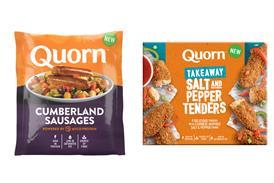



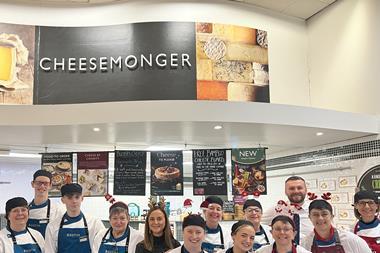



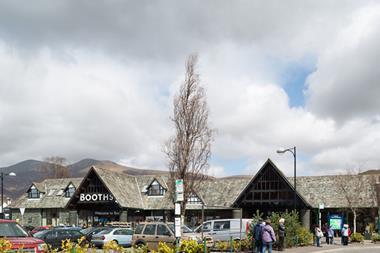
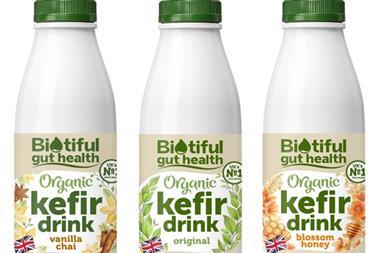
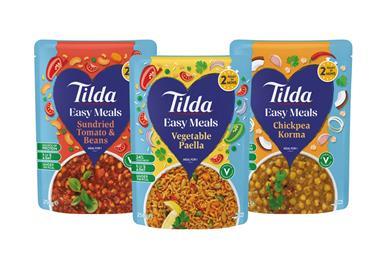


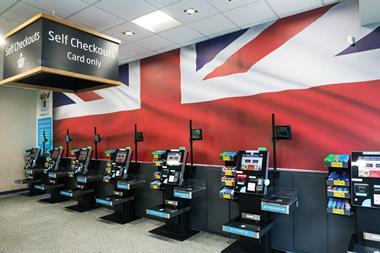
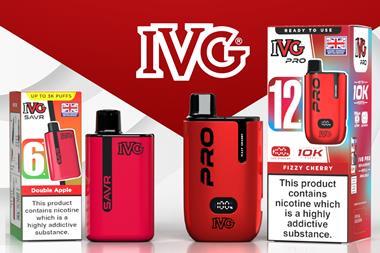





















No comments yet